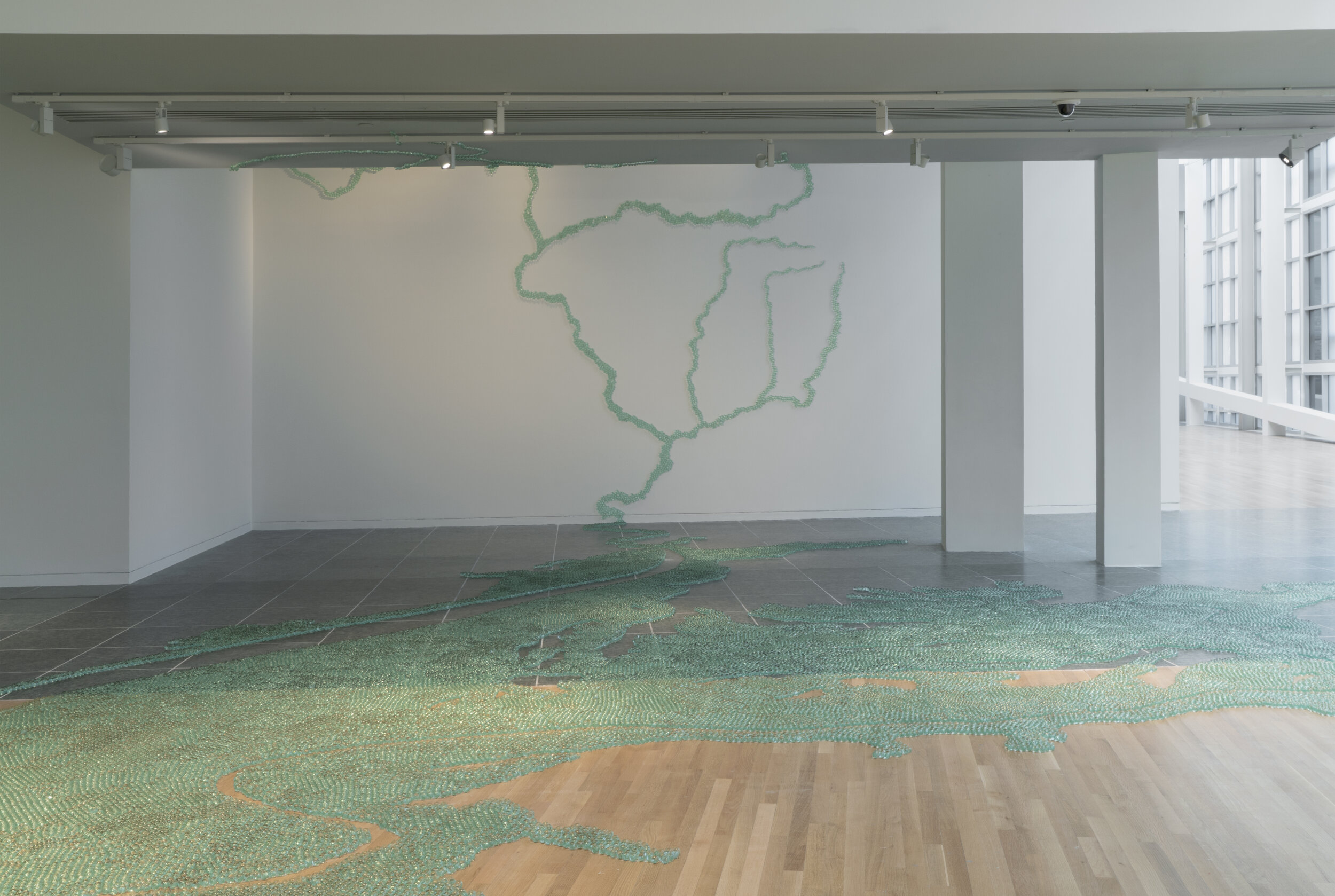HERE: Wexner Center for the Arts, Columbus, OH
How Does A River Overflow Its Banks?, 2019
Glass marbles, adhesive
19’-0” x 96’-4” x 31’-0”
Pin River - Ohio Aquifers, 2019
Stainless steel pins
17'-2" x 31'-2" x 11'-5"
Photography: Luke Stettner, courtesy Wexner Center for the Arts
Maya Lin points to “place” as one interpretive dimension of HERE, demonstrated by her large-scale site-specific installations in which she subsumes a cartographer’s view of our own Ohio waterways. Pin River-Ohio Aquifers, installed in the Wexner’s lower lobby, was constructed by patiently hammering 81,074 individual steel pins into the wall in a pattern that defines the Ohio aquifer system. It is a stunning aggregate work whose minimalist beauty is perhaps most evident when light hitting the network of pins creates the slightest of shadows, setting the water of Ohio’s underground aquifers into languid currents of motion. While beautiful, the sober intent behind Pin River-Ohio Aquifers is to call attention to the contamination and potential destruction of our state’s precious groundwater supply due to ongoing fracking and its residual pollution.
Through her work, Lin, who has been an environmental activist since her youth in Athens, encourages a closer examination of the natural world. Her concern for our Ohio waterways is again made evident in her second installation, How Does a River Overflow Its Banks? This work recasts the footprint of a 2018 flood that occurred at the convergence of the Ohio and Wabash Rivers, using an accumulation of hundreds of thousands of individual beads of industrial glass. Using this quotidian material, Lin illustrates this particular flood as an example of the state’s long and terrible history of Ohio River Basin flooding, including its tributaries that climb our gallery walls. The museum space is utterly transformed, overwhelmed by the deluge of glass marbles that so flawlessly capture the light, shimmering in their mimicry of water. Through this gesture, Lin allows us to see beyond our finite and limited perception of the river system so that we may fully grasp its scale, power, and potential for destruction.








